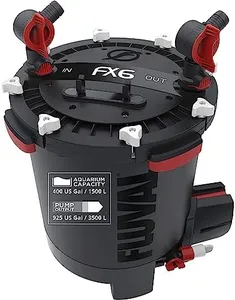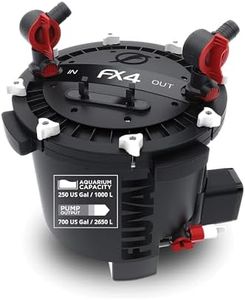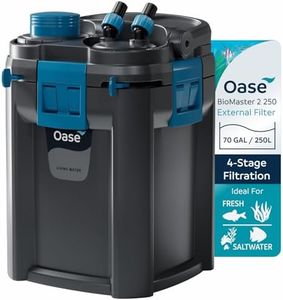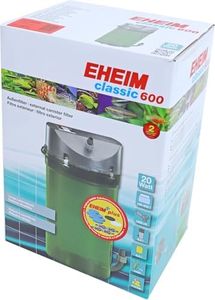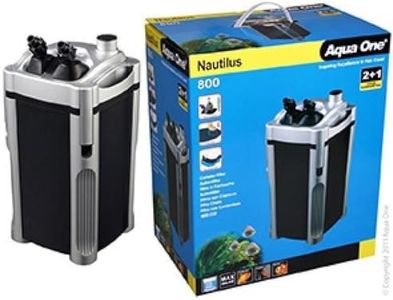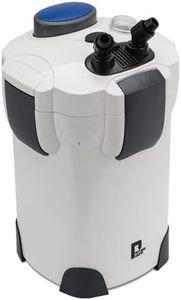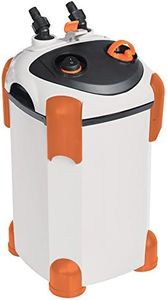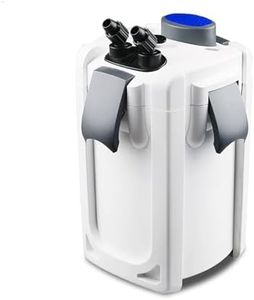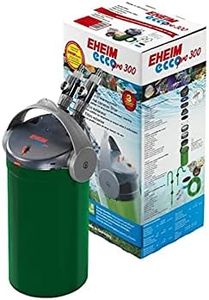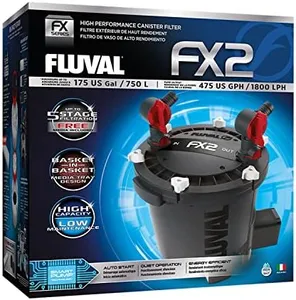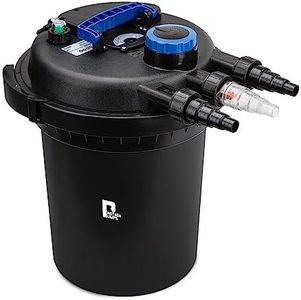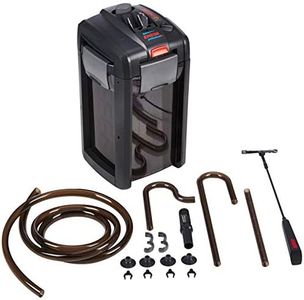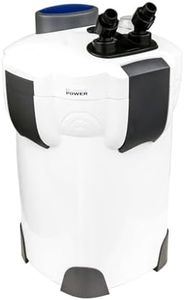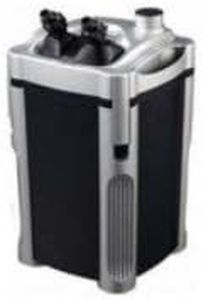We Use CookiesWe use cookies to enhance the security, performance,
functionality and for analytical and promotional activities. By continuing to browse this site you
are agreeing to our privacy policy
10 Best Aquarium Canister Filters
From leading brands and best sellers available on the web.By clicking on a link to a third party's website, log data is shared with that third party.
Buying Guide for the Best Aquarium Canister Filters
Choosing the right aquarium canister filter is key to maintaining a healthy aquatic environment for your fish and plants. Canister filters are popular because they offer powerful filtration, versatility, and the ability to handle large tanks or demanding setups. When picking the best canister filter for your needs, focus on the core features that impact filtration effectiveness, ease of use, and long-term reliability. Understanding what each feature does and how it matches your particular tank will help you make an informed decision, ensuring clean, clear, and healthy water for all your aquarium inhabitants.Tank Size CompatibilityTank size compatibility is the recommended aquarium volume a canister filter is designed to handle. This is important because using a filter that's too small can lead to poor water quality, while one that's too large might create unnecessary flow or noise. Most canister filters come with a tank size range. Smaller filters are suitable for tanks up to 30 gallons and usually provide basic filtration for lightly stocked tanks, while medium filters handle tanks from 30 to 75 gallons, appropriate for most home aquariums. Large filters are built for tanks over 75 gallons and are often used in planted, cichlid, or marine setups. Always match, or slightly overmatch, your filter to your tank size for optimal results.
Flow Rate (Gallons per Hour, GPH)The flow rate measures how much water the filter can process per hour and is usually given in gallons per hour (GPH). This is crucial because it affects how quickly your water cycles through the filtration system. As a rule of thumb, you want the filter to process your entire tank volume at least four to six times per hour. For example, a 50-gallon aquarium should have a canister filter rated at around 200-300 GPH. Higher flow rates are better for heavily stocked or larger tanks, but too strong a flow might disturb delicate plants or fish. If you have slow-swimming or small fish, look for filters with adjustable flow so you can fine-tune it to your livestock's comfort.
Filtration StagesFiltration stages describe the number and type of filter media the canister accommodates. Most canister filters use three types: mechanical (removes debris), biological (hosts beneficial bacteria), and chemical (removes odors and pollutants). More media baskets or stages allow greater customization and more thorough filtration, which is beneficial for complex or demanding tanks. For basic setups, a three-stage filter is often enough, but high-tech, planted, or specialty tanks might benefit from additional stages. Consider your aquarium's stocking level and maintenance routine when deciding how many and what types of stages you need.
Ease of MaintenanceEase of maintenance refers to how simple it is to open, clean, and reassemble the canister filter. Filters that are difficult or messy to service can discourage regular upkeep, which isn't good for your fish. Some filters have easy-access latches, self-priming pumps, or quick-disconnect valves for hoses, making cleaning less of a chore. If you're likely to be doing frequent water changes or maintenance, picking a user-friendly model will save you time and hassle in the long run.
Noise LevelNoise level describes how loud the filter operates, which can be important if your aquarium is in a living room, bedroom, or office. Quieter filters generally use better motor insulation and design. If you want a peaceful environment, look for models with good reviews for quiet operation or those specifically designed for low noise. If the aquarium is in a less sensitive location, noise may not be as much of an issue.
Adjustability and Custom FeaturesAdjustability covers features like customizable media baskets, variable flow rates, and alternate intake/output sizes or directions. Customization is important if your tank houses sensitive or unique species, or if you want to experiment with different types of filter media. If you like to tinker and optimize, choose a filter with these adjustable options; if you prefer simplicity, a basic model should suffice.
